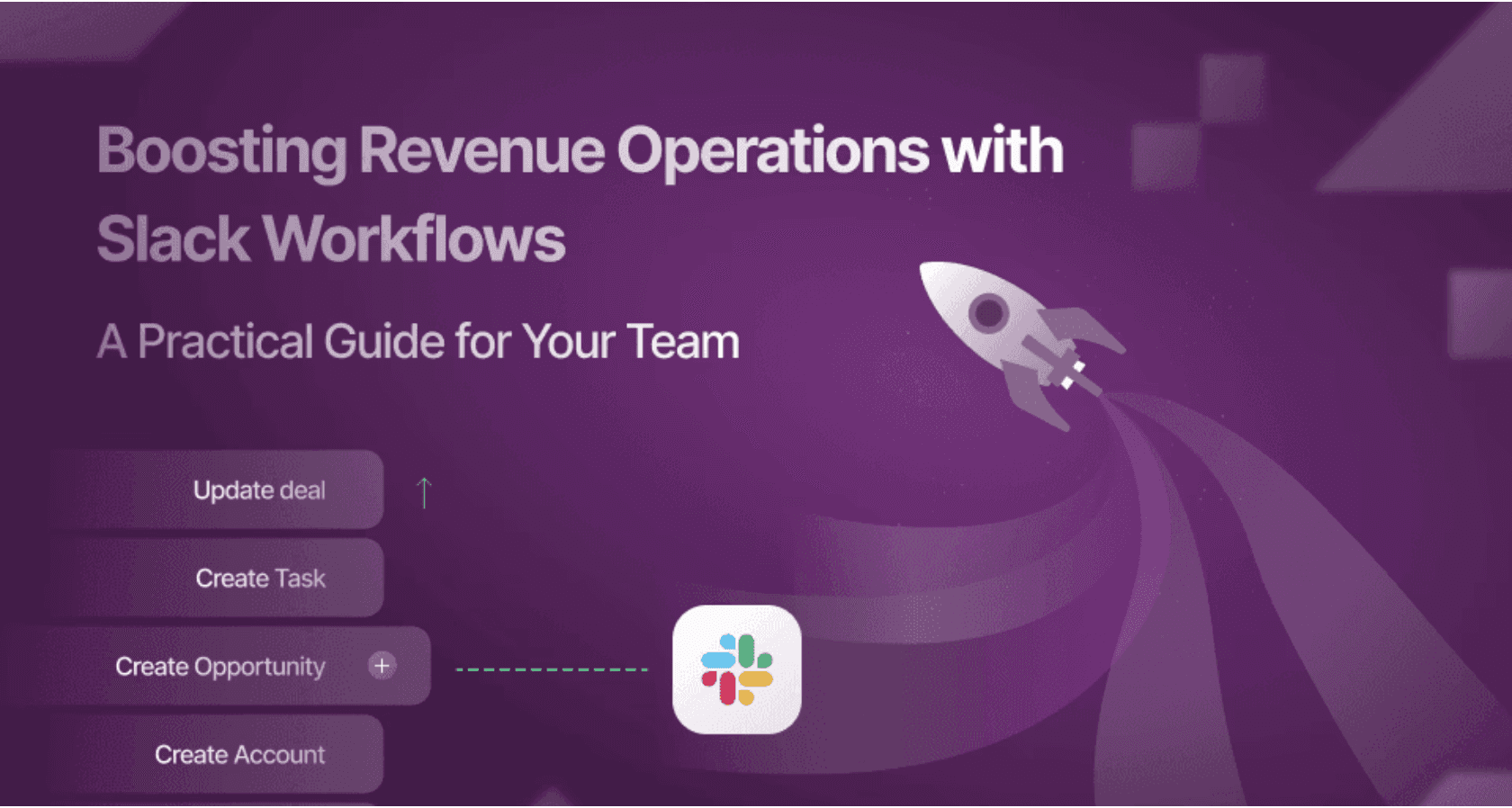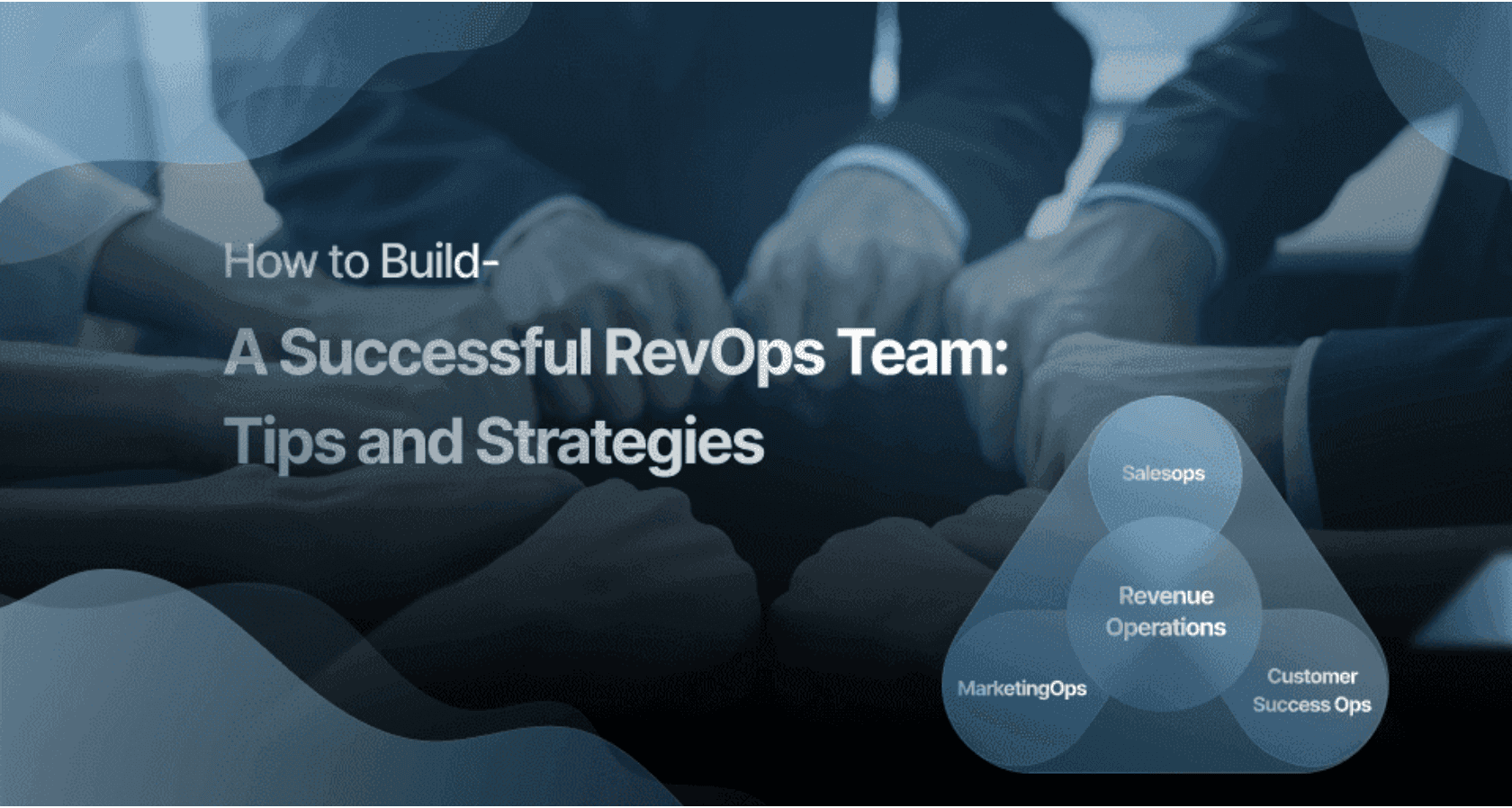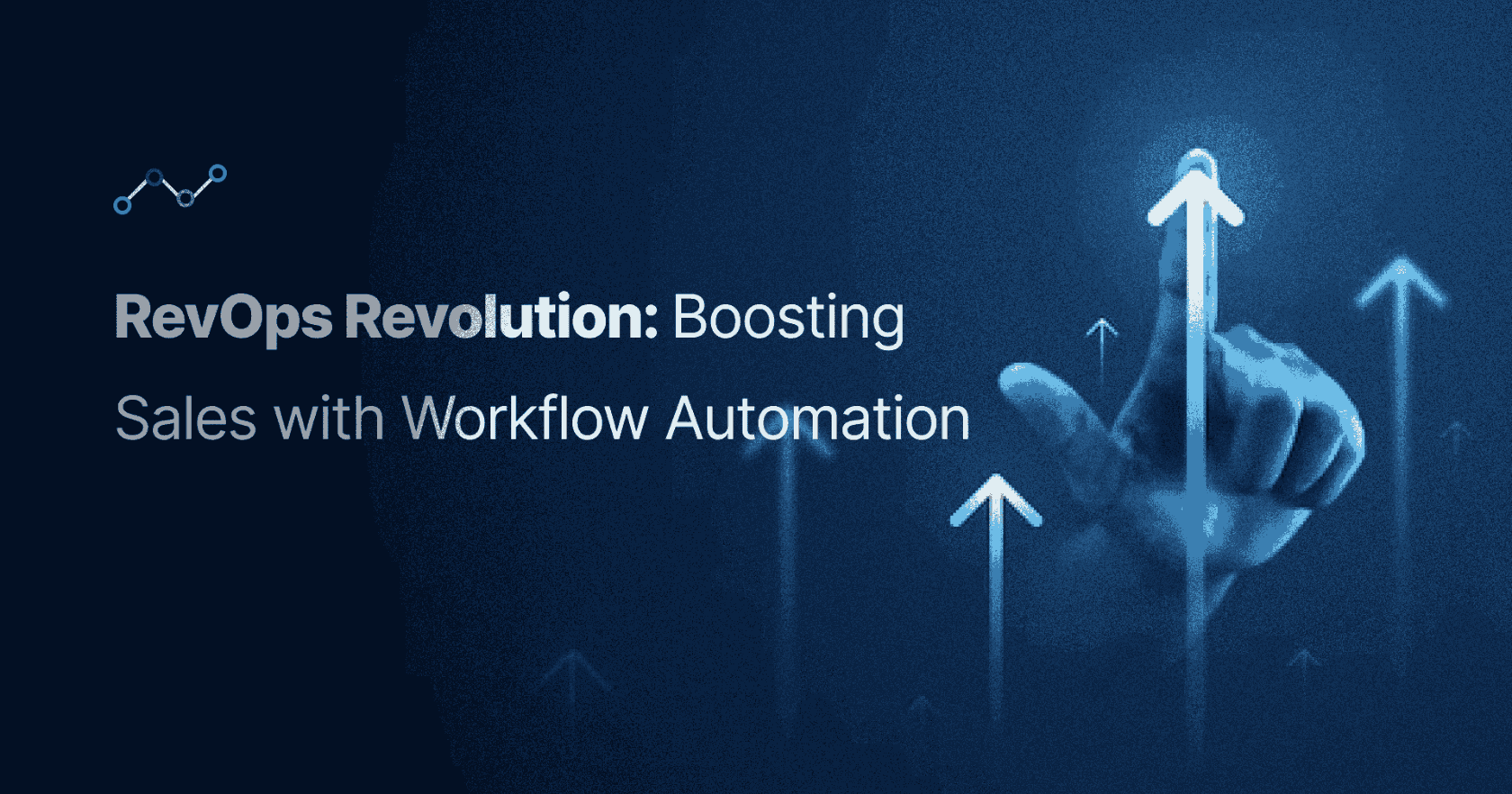In the fast-paced, ever-evolving business landscape, RevOps has become the secret sauce for organizations aiming to streamline their operations and boost revenue. If RevOps were a superhero, data would be its sidekick. And what better tool to harness that data than Salesforce? Buckle up as we dive into how you can leverage Salesforce insights to craft killer RevOps strategies that even your toughest competitors will envy.
Understanding RevOps
RevOps is the secret sauce that aligns sales, marketing, and customer success teams to drive predictable revenue growth. Think of it as the conductor of an orchestra, ensuring every department hits the right notes at the right time. But instead of a baton, our conductor wields data. And not just any data—actionable, insight-rich data.
It is crucial to maintain the good health of your RevOps, and here are the 5 Metrics to Measure Your RevOps Health.
Sales Operations: Streamlining the Sales Machine
Sales Operations is the engine that keeps the sales machine running smoothly. It's about optimizing processes, managing the pipeline, and forecasting future sales. Think of it as a pit crew in a Formula 1 race, ensuring the car runs at peak performance.
Consider IBM. They use Salesforce to streamline their sales operations by automating repetitive tasks, which frees up their sales reps to focus on selling. They’ve implemented sophisticated forecasting models using Salesforce, allowing them to predict sales trends with remarkable accuracy. The result? A significant reduction in the sales cycle and an increase in win rates.
Marketing Operations: Crafting Campaigns that Convert
Marketing Operations is all about optimizing marketing efforts to ensure they align with sales goals. It’s like crafting the perfect recipe—each ingredient (campaign, content, channel) must be measured and mixed correctly to achieve the desired outcome.
Take Coca-Cola’s “Share a Coke” campaign. They used Salesforce to analyze data from previous campaigns, track real-time engagement, and adjust their strategy on the fly. This data-driven approach allowed them to personalize the campaign and significantly boost consumer engagement. The alignment between their marketing and sales efforts resulted in a notable increase in sales during the campaign period.
Customer Success: Keeping the Customer at the Heart
Customer Success is about ensuring customers achieve their desired outcomes while using your product or service. It's like being a gardener, nurturing relationships to ensure they grow and flourish.
Spotify is a master at this. Using Salesforce, they track user behavior and engagement patterns to offer personalized recommendations and timely support. This proactive approach helps reduce churn rates and increase customer loyalty. They understand that a happy customer is a repeat customer, and they leverage data to keep their users coming back for more.
The Power of Data in RevOps
At the heart of RevOps is data-rich, actionable, insight-laden data. It's the fuel that powers decision-making and strategy across sales, marketing, and customer success.
Look at HubSpot. They use Salesforce to integrate data from various departments, creating a single source of truth. This holistic view allows them to identify trends, optimize campaigns, and improve customer interactions. By leveraging data, HubSpot ensures every department is aligned and working towards the same revenue goals.
The Magic of Alignment
When sales, marketing, and customer success teams are aligned, magic happens. RevOps creates a seamless flow of information, ensuring everyone is on the same page and working towards common objectives.
Slack is a prime example. They integrated Salesforce to align their sales and marketing teams, creating a unified strategy. By sharing insights and collaborating effectively, they reduced their sales cycle by 25% and saw a significant increase in lead conversion rates. Slack’s success underscores the importance of alignment in driving revenue growth.
So, to sum up, RevOps is the conductor that ensures every department in your organization plays in harmony. By leveraging actionable data, it aligns sales, marketing, and customer success to drive predictable, scalable revenue growth. So, if you want to turn your business into a symphony of success, it's time to embrace the power of RevOps and let data be your guide.
Salesforce: A Brief Overview
Salesforce isn’t just a CRM; it’s a powerhouse of data-driven goodness. With tools like Sales Cloud, Service Cloud, and Marketing Cloud, it’s like having a Swiss Army knife for your business operations. Whether you’re looking to boost sales efficiency, streamline customer service, or craft killer marketing campaigns, Salesforce has got your back.
Sales Cloud: Boosting Sales Efficiency
Sales Cloud is the superhero cape your sales team didn’t know they needed. It’s designed to supercharge your sales process, helping you close deals faster, manage customer relationships, and forecast future sales with precision. Imagine having a crystal ball that shows you where to focus your efforts for maximum impact.
Take Schneider Electric, for instance. They used Sales Cloud to streamline their sales processes across multiple regions. By centralizing their data and automating key tasks, they saw a 20% increase in sales productivity and a significant reduction in the sales cycle. Sales Cloud provided their team with real-time insights, allowing them to make data-driven decisions and focus on the most promising leads.
Service Cloud: Streamlining Customer Service
Service Cloud is like having a magic wand for customer service. It empowers your support team to deliver exceptional service by providing a 360-degree view of every customer interaction. From case management to self-service portals, Service Cloud ensures that your customers receive timely and personalized support.
Think of Marriott International. They implemented Service Cloud to enhance their customer service across thousands of properties worldwide. With a unified view of each guest’s history and preferences, their support agents can provide personalized experiences, resolving issues faster and increasing customer satisfaction. The result? A 15% increase in customer retention and glowing reviews from happy guests.
Marketing Cloud: Crafting Killer Campaigns
Marketing Cloud is the ultimate toolkit for crafting and executing marketing campaigns that resonate with your audience. It offers advanced segmentation, automation, and analytics to ensure your campaigns hit the mark every time. Whether you’re running email campaigns, social media ads, or personalized journeys, Marketing Cloud has the tools you need.
Consider American Express. They use Marketing Cloud to deliver highly personalized marketing campaigns to their customers. By leveraging data and automation, they can target the right audience with the right message at the right time. This approach has led to a 30% increase in engagement rates and a significant boost in customer loyalty.
The Power of Integration
One of Salesforce’s greatest strengths is its ability to integrate seamlessly with other tools and platforms. Whether you’re using third-party applications or other Salesforce products, integration ensures that your data flows smoothly across your entire tech stack.
Adobe integrated Salesforce with its existing marketing and sales tools to create a cohesive ecosystem. This integration allowed them to track customer interactions from the first touchpoint to the final sale, providing a comprehensive view of the customer journey. As a result, Adobe saw a 25% increase in lead conversion rates and improved overall campaign performance.
Einstein Analytics: Advanced Insights
For those who want to take their data analysis to the next level, Salesforce Einstein Analytics offers AI-powered insights and predictions. It’s like having a data scientist on your team, providing actionable insights and forecasting trends.
Toyota uses Einstein Analytics to analyze vast amounts of data from their customer interactions and vehicle performance. By identifying patterns and trends, they can proactively address potential issues and enhance the customer experience. This predictive approach has led to higher customer satisfaction and reduced maintenance costs.
Therefore, Salesforce is not just a CRM; it’s a comprehensive platform that empowers your business to operate more efficiently and effectively. Whether you’re looking to boost sales, streamline customer service, or craft killer marketing campaigns, Salesforce has the tools and capabilities to help you achieve your goals. So, gear up and let Salesforce be your trusted partner in driving business success.
Extracting Valuable Insights from Salesforce
Salesforce is a goldmine of data. From sales figures to customer interactions, every click, call, and email is recorded. But data alone is like having a puzzle with no picture to guide you. Here’s where Salesforce reports and dashboards come in. They turn that jumble of pieces into a clear, actionable picture. And for those who want to go beyond the basics, Salesforce Einstein Analytics offers advanced data analysis that’s almost as smart as Einstein himself.
Salesforce Reports: Turning Data into Action
Salesforce reports are like your data’s personal trainer, whipping it into shape and making it presentable. Reports help you organize, filter, and visualize your data, transforming raw numbers into insights that drive decisions.
Consider the case of L’Oréal. They use Salesforce reports to track the performance of their sales teams across different regions. By analyzing these reports, they can identify which products are flying off the shelves and which ones need a little more love. This granular insight allows them to adjust their strategies in real-time, optimizing their product distribution and sales tactics to match demand.
Salesforce Dashboards: Your Data at a Glance
Dashboards in Salesforce are like the dashboard of a car—they show you all the important metrics at a glance. Dashboards consolidate your key data points into visual representations, making it easy to monitor performance and spot trends.
Making the Most of Your Data
So, how do you get the most out of these tools? Here are a few tips:
1. Regular Reporting: Set up regular reporting schedules to keep your data fresh and your insights relevant. Automation can be your best friend here—let Salesforce do the heavy lifting.
2. Custom Dashboards: Customize your dashboards to highlight the metrics that matter most to your business. Whether it’s sales performance, customer service response times, or marketing campaign effectiveness, make sure your key data is front and center.
3. Training and Adoption: Ensure your team is well-trained on how to use these tools. The more comfortable they are with generating reports and interpreting dashboards, the more value you’ll extract from your data.
4. Leverage AI: Don’t be afraid to dive into Einstein Analytics. The AI capabilities can provide a competitive edge by offering predictive insights that traditional analysis might miss.
While using Salesforce, Future-Proofing Your RevOps Strategy with Advanced Dataloader Technologies.
Applying Salesforce Insights to RevOps Strategies
Alright, let’s roll up our sleeves and get into the nitty-gritty of how Salesforce can revolutionize your RevOps game.
Sales Optimization:
Ever wonder why some sales reps seem to have all the luck? Spoiler alert: it’s not luck; it’s data. With Salesforce, you can identify which strategies are working and which ones need a revamp. For instance, use forecasting tools to predict sales trends and pipeline management features to keep deals moving smoothly. Like at Acme Corp, they used Salesforce to track sales rep performance and found that follow-up calls made within 24 hours had a 30% higher close rate.
Marketing Alignment:
Gone are the days of sales and marketing teams playing tug-of-war. With shared insights from Salesforce, these teams can work together like peanut butter and jelly. Analyze marketing campaign performance to see what’s driving leads, and adjust your strategies on the fly. Remember the classic Coca-Cola “Share a Coke” campaign? They used Salesforce to track the success of their personalized bottles, aligning marketing efforts with sales data to boost customer engagement.
Customer Success:
Keeping customers happy is like keeping plants alive—you need the right data to know when to water them. Salesforce can help you pinpoint customer pain points and address them before they become deal-breakers. Plus, predictive analytics can identify which customers are at risk of churning. Take Spotify, for example. They use Salesforce to monitor user interactions and offer personalized recommendations, keeping users hooked and reducing churn.
Case Studies
Let's dive into a couple of success stories where companies have leveraged Salesforce to transform their RevOps strategies.
Slack: The collaboration hub, Slack, used Salesforce to unify their sales and marketing teams. By sharing insights and aligning their strategies, they were able to streamline processes and cut their sales cycle time by 25%. This integration enabled them to respond faster to customer needs and drive more effective marketing campaigns.
T-Mobile: Using Salesforce, T-Mobile integrated customer data across channels to gain a 360-degree view of their customers. This comprehensive data approach led to a 20% increase in customer satisfaction scores as they were able to provide personalized service and targeted offers based on customer preferences.
Best Practices for Leveraging Salesforce in RevOps
To get the most out of Salesforce, you need to play it smart. Here are some tips to optimize your RevOps strategies:
1. Data Integration: Building a Single Source of Truth
Ensure all your data sources are integrated into Salesforce. This creates a unified view of your business operations, preventing data silos that can lead to inefficiencies and inaccuracies.
Why It Matters:
Imagine having sales data in one system, customer support data in another, and marketing data in yet another. Without integration, you’re working with fragmented insights that hinder your ability to make informed decisions across departments.
Best Practice:
Integrate Salesforce with your existing systems—whether it’s your ERP, marketing automation platform, or customer support software. This integration ensures that everyone in your organization is working from the same playbook, leveraging consistent and up-to-date information.
2. Data Quality: Garbage In, Garbage Out
Data is only valuable if it’s accurate and relevant. Maintain data cleanliness by regularly auditing and cleansing your database.
Why It Matters:
Inaccurate or outdated data can lead to flawed analyses, misguided decisions, and ultimately, missed revenue opportunities. It’s like trying to build a house on a shaky foundation.
Best Practice:
Implement data hygiene practices such as automated data validation rules, regular deduplication efforts, and training your team on data entry best practices. By keeping your data clean and up-to-date, you ensure that Salesforce insights are reliable and actionable.
3. Cross-Functional Collaboration: Breaking Down Silos
Encourage your teams to share insights and collaborate effectively across departments. Salesforce’s Chatter feature can facilitate real-time communication and collaboration within the platform.
Why It Matters:
Silos breed inefficiencies and hinder innovation. When sales, marketing, and customer success teams work in isolation, opportunities for synergy and cross-pollination of ideas are lost.
Best Practice:
Promote a culture of collaboration by using Chatter to share updates, celebrate wins, and discuss strategies. Encourage team members to contribute insights from their respective areas to gain a holistic view of customer interactions and market trends.
4. Continuous Learning: Staying Ahead of the Curve
The business landscape is constantly evolving. Stay informed about industry trends, emerging technologies, and evolving customer expectations to adapt your RevOps strategies accordingly.
Why It Matters:
What works today may not work tomorrow. Stagnation leads to obsolescence. Continuous learning ensures that your RevOps strategies remain relevant and effective in a dynamic marketplace.
Best Practice:
Invest in ongoing training for your team on Salesforce updates, industry best practices, and emerging technologies. Attend webinars, conferences, and workshops to stay ahead of the curve. Foster a culture of curiosity and innovation where learning is encouraged and rewarded.
Tools and Integrations to Enhance Salesforce Insights
Salesforce is powerful on its own, but integrating other tools can take it to the next level. Here are key tools and integrations that can enhance your Salesforce insights and streamline operations:
1. Pardot: Marketing Automation Made Easy
Pardot, part of the Salesforce ecosystem, is a robust marketing automation platform designed specifically for B2B organizations. It enables marketers to create, deploy, and manage sophisticated marketing campaigns that drive pipeline and empower sales teams.
Benefits of Integrating Pardot with Salesforce:
- Lead Nurturing and Management: Pardot automates lead nurturing workflows based on prospect interactions captured in Salesforce. This integration ensures that leads are nurtured effectively through personalized content and timely follow-ups.
- Campaign Tracking and ROI Analysis: Marketers can track campaign performance metrics such as click-through rates, conversion rates, and ROI directly within Salesforce. This real-time visibility allows for quick adjustments and optimizations to maximize campaign effectiveness.
- Lead Scoring and Grading: By integrating Pardot’s lead scoring and grading capabilities with Salesforce data, sales teams can prioritize leads based on their engagement level and fit criteria. This alignment ensures that sales efforts are focused on leads most likely to convert, improving efficiency and closing rates.
2. Tableau: Advanced Data Visualization and Analytics
Tableau is a leading business intelligence and analytics platform known for its powerful data visualization capabilities. It helps organizations explore, analyze, and understand data to make informed decisions.
Benefits of Integrating Tableau with Salesforce:
- Interactive Dashboards and Reports: Tableau allows users to create highly interactive and visually compelling dashboards that integrate seamlessly with Salesforce data. Users can drill down into details, explore trends, and gain actionable insights at a glance.
- Advanced Analytics and Predictive Modeling: Organizations can perform sophisticated analyses, predictive modeling, and statistical operations on Salesforce data using Tableau’s advanced analytics features. This enables deeper insights into customer behavior, sales performance, and operational efficiency.
- Data Blending and Integration: Tableau supports data blending capabilities, allowing organizations to combine Salesforce data with other sources such as ERP systems, marketing platforms, or external databases. This holistic view helps in gaining a comprehensive understanding of business operations and customer interactions.
3. Slack: Seamless Team Collaboration
Slack is a popular collaboration platform that brings teams together, simplifies communication and enhances productivity.
Benefits of Integrating Slack with Salesforce:
- Real-Time Communication and Notifications: Integrating Salesforce with Slack enables real-time notifications and updates to be shared across teams. Sales, marketing, and customer support teams can receive alerts on important events such as new leads, opportunities, or customer interactions directly within Slack channels.
- Project Coordination and File Sharing: Slack facilitates seamless project management and collaboration by enabling teams to share files, coordinate tasks, and discuss projects in dedicated channels. Salesforce data can be shared and discussed in context, improving decision-making and workflow efficiency.
- Custom Integrations and Automation: Organizations can extend Salesforce functionality in Slack through custom integrations and automation. Custom bots can fetch Salesforce data, initiate workflows, or provide real-time insights directly within Slack conversations, enhancing team productivity and responsiveness.
Choosing the Right Integrations
When selecting integrations to enhance Salesforce insights, it’s crucial to align them with your specific business needs and objectives. Consider factors such as data integration capabilities, ease of use, scalability, and compatibility with your existing tech stack.
By strategically integrating tools like Pardot for marketing automation, Tableau for advanced analytics, and Slack for team collaboration, organizations can leverage Salesforce as a central hub for driving revenue growth, improving operational efficiency, and fostering cross-functional alignment. These integrations empower teams to make data-driven decisions, deliver personalized customer experiences, and achieve business success in today’s competitive landscape.
RevOps is the backbone of modern business success, aligning sales, marketing, and customer success teams to drive predictable revenue growth. Salesforce stands as the ultimate ally in this journey, offering a robust suite of tools—from Sales Cloud for optimized sales processes to Marketing Cloud for impactful campaigns and Service Cloud for exceptional customer support.
Real-world examples like IBM’s streamlined sales operations and Coca-Cola’s personalized marketing success underscore how Salesforce turns data into actionable insights. Integration with tools like Pardot for marketing automation, Tableau for advanced analytics, and Slack for team collaboration enhances Salesforce’s capabilities, empowering organizations to make informed decisions and achieve operational excellence.
To thrive in today’s competitive landscape, businesses must embrace RevOps principles, foster cross-functional collaboration, and prioritize data integrity and integration. Salesforce equips organizations with the tools they need to innovate, scale, and deliver exceptional customer experiences. Harness the power of RevOps with Salesforce and propel your business toward sustained growth and success.





